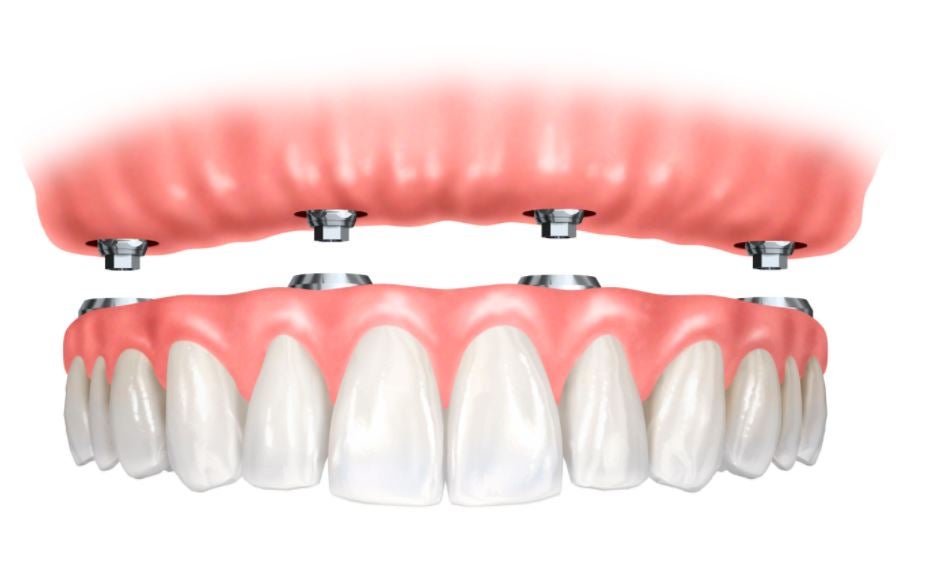What Does Dental Sense Do?
What Does Dental Sense Do?
Blog Article
Some Ideas on Dental Sense You Need To Know
Table of ContentsThe Best Guide To Dental SenseThe Dental Sense DiariesMore About Dental SenseEverything about Dental Sense
are clinical gadgets surgically implanted into the jaw to recover an individual's ability to eat or their look. They offer support for artificial (fake) teeth, such as crowns, bridges, or dentures. When a tooth is shed because of injury or condition, a person can experience problems such as rapid bone loss, malfunctioning speech, or modifications to chewing patterns that lead to pain.Oral implant systems contain an oral implant body and dental implant abutment and may additionally consist of an abutment addiction screw. Professional teeth whitening. The oral implant body is operatively placed in the jawbone instead of the tooth's root. The dental implant abutment is normally attached to the implant body by the joint fixation screw and extends via periodontals into the mouth to sustain the attached synthetic teeth
(https://canvas.instructure.com/eportfolios/3460980/home/transform-your-smile-with-wisdom-tooth-cavity-solutions-and-cosmetic-dentistry-services)Structure of The Dental Implant System picking oral implants, speak to your oral provider regarding the prospective benefits and risks, and whether you are a prospect for the procedure. Points to take into consideration: Your overall wellness is an important consider figuring out whether you are a good prospect for dental implants, for how long it will require to recover, and just how long the dental implant may remain in place.
Smoking cigarettes might impact the recovery process and lower the lasting success of the implant. The recovery procedure for the implant body might take several months or longer, throughout which time you commonly have a short-term joint instead of the tooth. the oral implant procedure: Meticulously comply with the dental health directions offered to you by your oral copyright.
All About Dental Sense
Implant failing can cause the requirement for another procedure to fix or replace the dental implant system. Restores the capacity to eat Recovers cosmetic appearance Aids keep the jawbone from diminishing as a result of bone loss Preserves the health and wellness of the bordering bone and gums Assists maintain adjacent (close-by) teeth secure Improves high quality of life Damage to bordering all-natural teeth during implant placement Injury to the surrounding tissues during surgical treatment, such as sinus perforation Injury during surgical treatment (as an example, fracture of surrounding jawbone) Inadequate function, such as seeming like the teeth do not attack together typically A feeling that the tooth hangs or twisting in position arising from an abutment screw loosening Implant body failing (looseness of the dental implant body) because of systemic infection, which may be more probable in patients with uncontrolled diabetics issues because of neighborhood infection in bone and gums supporting the dental implant body as a result of postponed recovery, which may be more probable in patients that smoke Difficulty cleansing the gums around the implant, resulting in bad dental health Unattended gum illness Post-surgical pins and needles because of nerve impingement or damage Constantly alert healthcare companies and imaging specialists that you have oral implants before any type of magnetic vibration imaging (MRI) or x-ray treatments.
FDA is not familiar with any type of unfavorable events reported for MRI or x-ray treatments with oral implants. Dental implants systems are generally made of products that comply with global consensus criteria of the International Organization for Standardization (ISO) or ASTM International. These criteria have details of what makes a safe product.

A dental implant is a structure that changes a missing out on tooth. With screw-like gadgets, the surgeon inserts a dental implant right into the jawbone, and it acts as an anchor for an artificial tooth, called a crown.
The Facts About Dental Sense Revealed
Some individuals are not eligible for oral implant surgical treatment. It is for oral cosmetic surgeons to operate people with: intense illnessuncontrollable metabolic diseasebone or soft tissue condition or infectionIf these problems are fixed, a person can have the surgical procedure. In, oral cosmetic surgeons refrain from operating on people with: If people with any one of the above undertake dental implant surgical treatment, there is a greater risk of the implant stopping working.

Oral implant surgical treatment is an individualized process. Offer you time to recover. Connect the article and last crown, bridge or denture.
Next, your cosmetic surgeon will very carefully position the oral implant right into your jaw. Ultimately, your doctor will rearrange your periodontals and shut the cut with stitches. If your dental implant is near the front of your mouth, your dental practitioner will certainly make a momentary tooth for you to use until you heal. In this way, you won't have Front tooth filling a void in your smile while you recover.
How Dental Sense can Save You Time, Stress, and Money.
Your service provider can tell you what to expect in your circumstance. Throughout the recovery phase, your jawbone ought to fuse to the dental implant. This process, called osseointegration, is critical for security and long-term success. This procedure can take anywhere from 3 to 9 months. In some instances, it might take much longer.
As soon as your dental implant heals, your dental professional can attach the abutment (tiny port post) and your last remediation (crown, bridge or denture). This usually takes regarding one hour to finish and might need a second small surgery. You should not feel any type of pain throughout your dental implant procedure because your service provider will utilize drug to numb your gums.
Report this page